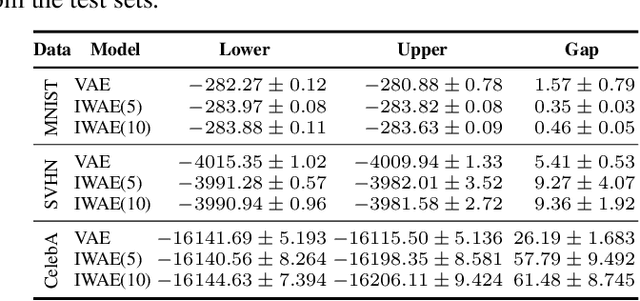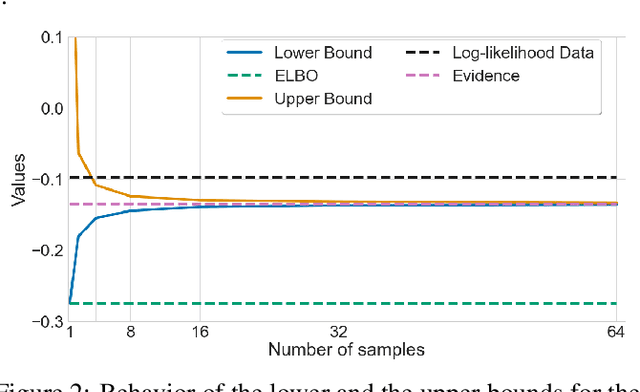Marcin Mazur
CLIPGaussian: Universal and Multimodal Style Transfer Based on Gaussian Splatting
May 28, 2025Abstract:Gaussian Splatting (GS) has recently emerged as an efficient representation for rendering 3D scenes from 2D images and has been extended to images, videos, and dynamic 4D content. However, applying style transfer to GS-based representations, especially beyond simple color changes, remains challenging. In this work, we introduce CLIPGaussians, the first unified style transfer framework that supports text- and image-guided stylization across multiple modalities: 2D images, videos, 3D objects, and 4D scenes. Our method operates directly on Gaussian primitives and integrates into existing GS pipelines as a plug-in module, without requiring large generative models or retraining from scratch. CLIPGaussians approach enables joint optimization of color and geometry in 3D and 4D settings, and achieves temporal coherence in videos, while preserving a model size. We demonstrate superior style fidelity and consistency across all tasks, validating CLIPGaussians as a universal and efficient solution for multimodal style transfer.
CEC-MMR: Cross-Entropy Clustering Approach to Multi-Modal Regression
Apr 09, 2025Abstract:In practical applications of regression analysis, it is not uncommon to encounter a multitude of values for each attribute. In such a situation, the univariate distribution, which is typically Gaussian, is suboptimal because the mean may be situated between modes, resulting in a predicted value that differs significantly from the actual data. Consequently, to address this issue, a mixture distribution with parameters learned by a neural network, known as a Mixture Density Network (MDN), is typically employed. However, this approach has an important inherent limitation, in that it is not feasible to ascertain the precise number of components with a reasonable degree of accuracy. In this paper, we introduce CEC-MMR, a novel approach based on Cross-Entropy Clustering (CEC), which allows for the automatic detection of the number of components in a regression problem. Furthermore, given an attribute and its value, our method is capable of uniquely identifying it with the underlying component. The experimental results demonstrate that CEC-MMR yields superior outcomes compared to classical MDNs.
MeshSplats: Mesh-Based Rendering with Gaussian Splatting Initialization
Feb 11, 2025Abstract:Gaussian Splatting (GS) is a recent and pivotal technique in 3D computer graphics. GS-based algorithms almost always bypass classical methods such as ray tracing, which offers numerous inherent advantages for rendering. For example, ray tracing is able to handle incoherent rays for advanced lighting effects, including shadows and reflections. To address this limitation, we introduce MeshSplats, a method which converts GS to a mesh-like format. Following the completion of training, MeshSplats transforms Gaussian elements into mesh faces, enabling rendering using ray tracing methods with all their associated benefits. Our model can be utilized immediately following transformation, yielding a mesh of slightly reduced quality without additional training. Furthermore, we can enhance the reconstruction quality through the application of a dedicated optimization algorithm that operates on mesh faces rather than Gaussian components. The efficacy of our method is substantiated by experimental results, underscoring its extensive applications in computer graphics and image processing.
Tight Bounds on Jensen's Gap: Novel Approach with Applications in Generative Modeling
Feb 06, 2025Abstract:Among various mathematical tools of particular interest are those that provide a common basis for researchers in different scientific fields. One of them is Jensen's inequality, which states that the expectation of a convex function is greater than or equal to the function evaluated at the expectation. The resulting difference, known as Jensen's gap, became the subject of investigation by both the statistical and machine learning communities. Among many related topics, finding lower and upper bounds on Jensen's gap (under different assumptions on the underlying function and distribution) has recently become a problem of particular interest. In our paper, we take another step in this direction by providing a novel general and mathematically rigorous technique, motivated by the recent results of Struski et al. (2023). In addition, by studying in detail the case of the logarithmic function and the log-normal distribution, we explore a method for tightly estimating the log-likelihood of generative models trained on real-world datasets. Furthermore, we present both analytical and experimental arguments in support of the superiority of our approach in comparison to existing state-of-the-art solutions, contingent upon fulfillment of the criteria set forth by theoretical studies and corresponding experiments on synthetic data.
RaySplats: Ray Tracing based Gaussian Splatting
Jan 31, 2025Abstract:3D Gaussian Splatting (3DGS) is a process that enables the direct creation of 3D objects from 2D images. This representation offers numerous advantages, including rapid training and rendering. However, a significant limitation of 3DGS is the challenge of incorporating light and shadow reflections, primarily due to the utilization of rasterization rather than ray tracing for rendering. This paper introduces RaySplats, a model that employs ray-tracing based Gaussian Splatting. Rather than utilizing the projection of Gaussians, our method employs a ray-tracing mechanism, operating directly on Gaussian primitives represented by confidence ellipses with RGB colors. In practice, we compute the intersection between ellipses and rays to construct ray-tracing algorithms, facilitating the incorporation of meshes with Gaussian Splatting models and the addition of lights, shadows, and other related effects.
VeGaS: Video Gaussian Splatting
Nov 17, 2024Abstract:Implicit Neural Representations (INRs) employ neural networks to approximate discrete data as continuous functions. In the context of video data, such models can be utilized to transform the coordinates of pixel locations along with frame occurrence times (or indices) into RGB color values. Although INRs facilitate effective compression, they are unsuitable for editing purposes. One potential solution is to use a 3D Gaussian Splatting (3DGS) based model, such as the Video Gaussian Representation (VGR), which is capable of encoding video as a multitude of 3D Gaussians and is applicable for numerous video processing operations, including editing. Nevertheless, in this case, the capacity for modification is constrained to a limited set of basic transformations. To address this issue, we introduce the Video Gaussian Splatting (VeGaS) model, which enables realistic modifications of video data. To construct VeGaS, we propose a novel family of Folded-Gaussian distributions designed to capture nonlinear dynamics in a video stream and model consecutive frames by 2D Gaussians obtained as respective conditional distributions. Our experiments demonstrate that VeGaS outperforms state-of-the-art solutions in frame reconstruction tasks and allows realistic modifications of video data. The code is available at: https://github.com/gmum/VeGaS.
GASP: Gaussian Splatting for Physic-Based Simulations
Sep 09, 2024Abstract:Physics simulation is paramount for modeling and utilization of 3D scenes in various real-world applications. However, its integration with state-of-the-art 3D scene rendering techniques such as Gaussian Splatting (GS) remains challenging. Existing models use additional meshing mechanisms, including triangle or tetrahedron meshing, marching cubes, or cage meshes. As an alternative, we can modify the physics grounded Newtonian dynamics to align with 3D Gaussian components. Current models take the first-order approximation of a deformation map, which locally approximates the dynamics by linear transformations. In contrast, our Gaussian Splatting for Physics-Based Simulations (GASP) model uses such a map (without any modifications) and flat Gaussian distributions, which are parameterized by three points (mesh faces). Subsequently, each 3D point (mesh face node) is treated as a discrete entity within a 3D space. Consequently, the problem of modeling Gaussian components is reduced to working with 3D points. Additionally, the information on mesh faces can be used to incorporate further properties into the physics model, facilitating the use of triangles. Resulting solution can be integrated into any physics engine that can be treated as a black box. As demonstrated in our studies, the proposed model exhibits superior performance on a diverse range of benchmark datasets designed for 3D object rendering.
PrAViC: Probabilistic Adaptation Framework for Real-Time Video Classification
Jun 17, 2024Abstract:Video processing is generally divided into two main categories: processing of the entire video, which typically yields optimal classification outcomes, and real-time processing, where the objective is to make a decision as promptly as possible. The latter is often driven by the need to identify rapidly potential critical or dangerous situations. These could include machine failure, traffic accidents, heart problems, or dangerous behavior. Although the models dedicated to the processing of entire videos are typically well-defined and clearly presented in the literature, this is not the case for online processing, where a plethora of hand-devised methods exist. To address this, we present \our{}, a novel, unified, and theoretically-based adaptation framework for dealing with the online classification problem for video data. The initial phase of our study is to establish a robust mathematical foundation for the theory of classification of sequential data, with the potential to make a decision at an early stage. This allows us to construct a natural function that encourages the model to return an outcome much faster. The subsequent phase is to demonstrate a straightforward and readily implementable method for adapting offline models to online and recurrent operations. Finally, by comparing the proposed approach to the non-online state-of-the-art baseline, it is demonstrated that the use of \our{} encourages the network to make earlier classification decisions without compromising accuracy.
HyperPlanes: Hypernetwork Approach to Rapid NeRF Adaptation
Feb 02, 2024Abstract:Neural radiance fields (NeRFs) are a widely accepted standard for synthesizing new 3D object views from a small number of base images. However, NeRFs have limited generalization properties, which means that we need to use significant computational resources to train individual architectures for each item we want to represent. To address this issue, we propose a few-shot learning approach based on the hypernetwork paradigm that does not require gradient optimization during inference. The hypernetwork gathers information from the training data and generates an update for universal weights. As a result, we have developed an efficient method for generating a high-quality 3D object representation from a small number of images in a single step. This has been confirmed by direct comparison with the state-of-the-art solutions and a comprehensive ablation study.
Bounding Evidence and Estimating Log-Likelihood in VAE
Jun 19, 2022



Abstract:Many crucial problems in deep learning and statistics are caused by a variational gap, i.e., a difference between evidence and evidence lower bound (ELBO). As a consequence, in the classical VAE model, we obtain only the lower bound on the log-likelihood since ELBO is used as a cost function, and therefore we cannot compare log-likelihood between models. In this paper, we present a general and effective upper bound of the variational gap, which allows us to efficiently estimate the true evidence. We provide an extensive theoretical study of the proposed approach. Moreover, we show that by applying our estimation, we can easily obtain lower and upper bounds for the log-likelihood of VAE models.
 Add to Chrome
Add to Chrome Add to Firefox
Add to Firefox Add to Edge
Add to Edge